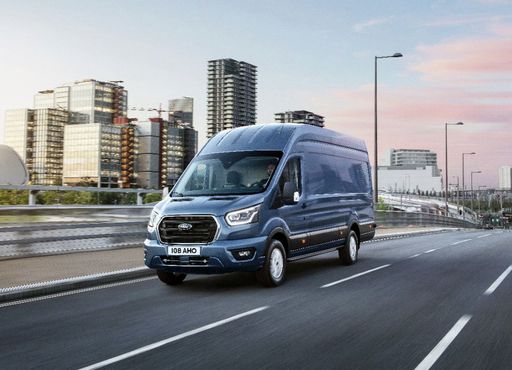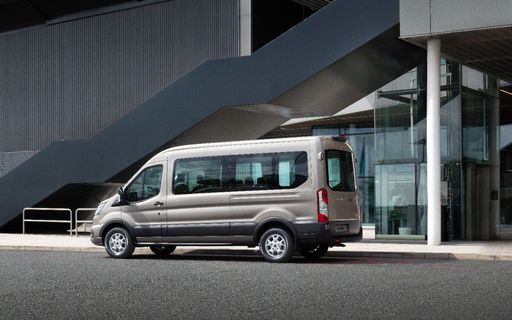Ford Transit Bus vs VW Amarok - Differences and prices compared
Costs and Efficiency:
Looking at overall running costs, both models reveal some interesting differences in everyday economy.
VW Amarok has a a bit advantage in terms of price – it starts at 43200 £, while the Ford Transit Bus costs 50500 £. That’s a price difference of around 7263 £.
Fuel consumption also shows a difference: VW Amarok manages with 8.60 L and is therefore minimal more efficient than the Ford Transit Bus with 9.40 L. The difference is about 0.80 L per 100 km.
Engine and Performance:
Power, torque and acceleration are the classic benchmarks for car enthusiasts – and here, some clear differences start to show.
When it comes to engine power, the VW Amarok has a distinct edge – offering 240 HP compared to 150 HP. That’s roughly 90 HP more horsepower.
There’s also a difference in torque: VW Amarok pulls distinct stronger with 600 Nm compared to 390 Nm. That’s about 210 Nm difference.
Space and Everyday Use:
Beyond pure performance, interior space and usability matter most in daily life. This is where you see which car is more practical and versatile.
Seats: Ford Transit Bus offers decisively more seating capacity – 9 vs 5.
In curb weight, VW Amarok is slight lighter – 2262 kg compared to 2338 kg. The difference is around 76 kg.
When it comes to payload, Ford Transit Bus slightly takes the win – 1162 kg compared to 983 kg. That’s a difference of about 179 kg.
Who wins the race?
The VW Amarok proves to be leaves the rival little chance and therefore becomes our DriveDuel Champion!
VW Amarok is the better all-rounder in this comparison.

VW Amarok
Costs and Consumption
View detailed analysis
Engine and Performance
View detailed analysis
Dimensions and Body
View detailed analysis
Ford Transit Bus
The Ford Transit is the reliable people-mover operators turn to when they need space, stamina and sensible running costs without fuss. It doesn't try to be glamorous, but its practical interior, flexible layouts and honest character make it a smart, stress-free choice for shuttle services and group transport.
details @ Ford Motor Company / Ford Media Center
@ Ford Motor Company / Ford Media Center
 @ Ford Motor Company / Ford Media Center
@ Ford Motor Company / Ford Media Center
 @ Ford Motor Company / Ford Media Center
@ Ford Motor Company / Ford Media Center
VW Amarok
The VW Amarok is a surprisingly refined pickup that blends rugged capability with car-like comfort, feeling equally at home on a worksite or a weekend escape. Practical, well‑mannered and a little bit charismatic, it’s a smart choice for buyers who need honest utility without sacrificing everyday drivability — and yes, it can be oddly addictive to drive.
details
 @ Ford Motor Company / Ford Media Center
@ Ford Motor Company / Ford Media Center
|
|
|
|
|
Costs and Consumption |
|
|---|---|
|
Price
50500 - 52900 £
|
Price
43200 - 64100 £
|
|
Consumption L/100km
9.4 - 9.5 L
|
Consumption L/100km
8.6 - 10.3 L
|
|
Consumption kWh/100km
-
|
Consumption kWh/100km
-
|
|
Electric Range
-
|
Electric Range
-
|
|
Battery Capacity
-
|
Battery Capacity
-
|
|
co2
245 - 248 g/km
|
co2
226 - 270 g/km
|
|
Fuel tank capacity
70 L
|
Fuel tank capacity
80 L
|
Dimensions and Body |
|
|---|---|
|
Body Type
Bus
|
Body Type
Pickup
|
|
Seats
9
|
Seats
5
|
|
Doors
4
|
Doors
4
|
|
Curb weight
2338 - 2385 kg
|
Curb weight
2262 - 2423 kg
|
|
Trunk capacity
0 L
|
Trunk capacity
-
|
|
Length
5531 - 5981 mm
|
Length
5350 mm
|
|
Width
2059 mm
|
Width
1910 mm
|
|
Height
2530 - 2533 mm
|
Height
1871 - 1884 mm
|
|
Max trunk capacity
-
|
Max trunk capacity
-
|
|
Payload
1115 - 1162 kg
|
Payload
883 - 983 kg
|
Engine and Performance |
|
|---|---|
|
Engine Type
Diesel
|
Engine Type
Diesel
|
|
Transmission
Automatic
|
Transmission
Manuel, Automatic
|
|
Transmission Detail
Automatic Gearbox
|
Transmission Detail
Manual Gearbox, Automatic Gearbox
|
|
Drive Type
Front-Wheel Drive
|
Drive Type
All-Wheel Drive
|
|
Power HP
130 - 150 HP
|
Power HP
170 - 240 HP
|
|
Acceleration 0-100km/h
-
|
Acceleration 0-100km/h
8.8 - 11.6 s
|
|
Max Speed
-
|
Max Speed
180 - 190 km/h
|
|
Torque
360 - 390 Nm
|
Torque
405 - 600 Nm
|
|
Number of Cylinders
4
|
Number of Cylinders
4 - 6
|
|
Power kW
96 - 110 kW
|
Power kW
125 - 177 kW
|
|
Engine capacity
1996 cm3
|
Engine capacity
1996 - 2993 cm3
|
General |
|
|---|---|
|
Model Year
2024
|
Model Year
2023
|
|
CO2 Efficiency Class
G
|
CO2 Efficiency Class
G
|
|
Brand
Ford
|
Brand
VW
|
What drivetrain options does the Ford Transit Bus have?
Available configurations include Front-Wheel Drive.
The prices and data displayed are estimates based on German list prices and may vary by country. This information is not legally binding.
